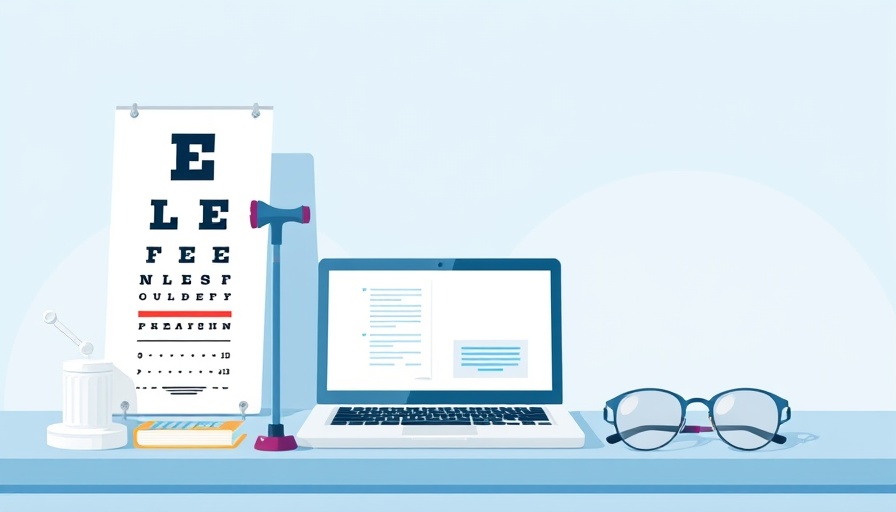
Understanding Legal Blindness: An Overview
Legal blindness affects more individuals than one might think, yet many are unaware of its nuances and management options. According to medical definitions, a person is considered legally blind if they have a central visual acuity of 20/200 or less in their better eye or a peripheral visual field of 20 degrees or less. This means that even those classified as legally blind may still possess some sight, highlighting the complexity of visual impairment.
In 'Legal blindness: Clinical Nursing Care,' the discussion dives into essential insights about understanding legal blindness, prompting a deeper analysis of its causes, care, and support for those affected.
The Importance of Eye Health: Causes and Risks
Common causes of legal blindness include conditions such as cataracts, age-related macular degeneration, glaucoma, and diabetic retinopathy. Additionally, eye infections and congenital anomalies contribute to visual impairment. Risk factors for developing these conditions often include age, gender (with women having a higher risk), and systemic diseases like diabetes. Understanding these factors can empower individuals and families to prioritize regular eye examinations and proactive care.
Pathology of Vision Loss: How It Happens
Legal blindness can typically stem from two primary areas: either structural issues within the eye or problems in the visual processing center in the brain. When the eye's components fail to function properly, light is not effectively translated into images. Alternatively, damage to the optic nerve or the brain itself can disrupt the processing of visual information. This intricate relationship underscores the importance of early detection and intervention.
Nursing Care: Best Practices for Supporting Clients
For healthcare providers, caring for individuals with legal blindness means maintaining their safety and quality of life. Building rapport is essential — professionals should introduce themselves, maintain eye contact, and clearly explain any actions before proceeding with care. Additionally, using techniques like the sighted guide method during ambulation ensures that the person feels supported and secure. It involves walking slightly ahead of them and allowing them to hold onto your elbow, providing a sense of direction and reassurance.
Emotional Support: Addressing Psychosocial Needs
Legal blindness can lead to emotional challenges, such as anxiety and altered self-perception. It's crucial for caregivers to utilize therapeutic communication skills, such as active listening, to encourage discussion about their feelings and experiences. This emotional support contributes to a holistic approach, ensuring that clients feel valued and understood throughout their care journey.
Low Vision Rehabilitation: Tools for Independence
Several effective strategies can help those with legal blindness regain a sense of independence. Low vision rehabilitation includes learning to use adaptive devices, ranging from magnifying glasses to assistive technology. Educating clients on how to self-manage medications and implement safety measures at home is vital to promoting autonomy and safety in their everyday lives.
Community Resources: Navigating a New Normal
Referrals to community resources can greatly enhance the quality of life for individuals facing legal blindness. Providing information on adaptive tools, braille courses, and support services for the visually impaired can empower clients to seek additional assistance. Ensuring that clients have access to these resources plays a crucial role in their ongoing care and adjustment.
Call to Action: Take Charge of Your Eye Health
Knowing the facts about legal blindness and its impact can be a game changer. If you or a loved one is facing this challenge, it is essential to schedule regular check-ups and explore rehabilitation options that promote independence. Every effort you make now can contribute significantly to future well-being. Stay educated, stay proactive, and prioritize your vision health. Remember, you’re not alone in this journey of learning to navigate life differently.
 Add Row
Add Row  Add
Add 




 Add Row
Add Row  Add
Add 

Write A Comment